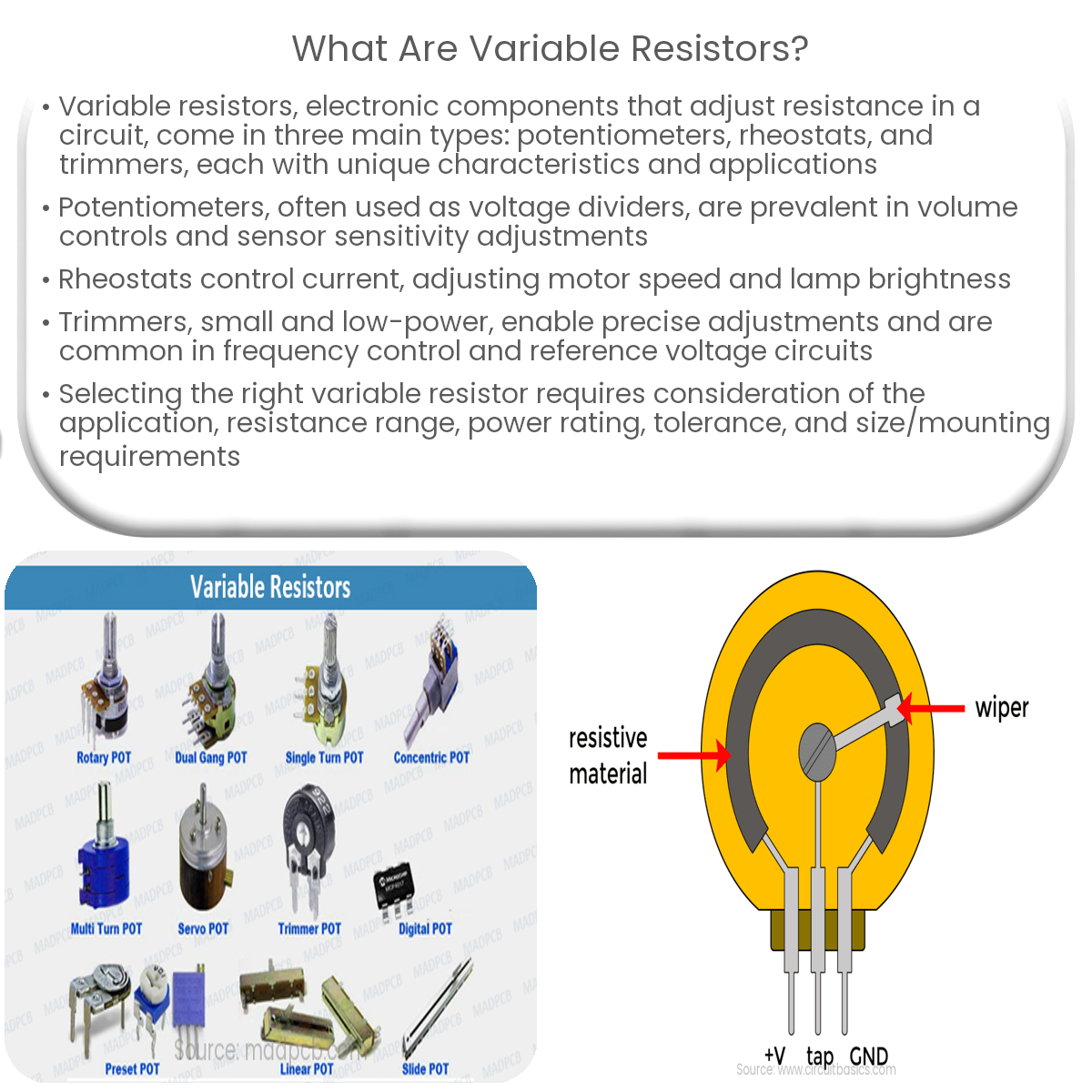Variable resistors are components that allow adjustable resistance in a circuit, with types including potentiometers, rheostats, and trimmers.
Introduction to Variable Resistors
A variable resistor is an electronic component that allows users to adjust the resistance within a circuit, thereby controlling the flow of electric current. It is often used for tuning, calibration, and adjustment purposes in electronic devices.
Types of Variable Resistors
There are three main types of variable resistors, each with its unique characteristics and applications:
Potentiometer
A potentiometer, often called a “pot” for short, is a three-terminal variable resistor. It consists of a resistive track and a wiper that moves along the track, changing the resistance between the terminals. The potentiometer is widely used as a voltage divider, where the output voltage is a fraction of the input voltage depending on the position of the wiper. Common applications include volume control in audio devices, dimmer switches, and adjusting sensor sensitivity.
Rheostat
A rheostat is a two-terminal variable resistor, where one terminal is connected to the wiper and the other to one end of the resistive track. The rheostat is primarily used to control the current flowing through a circuit by adjusting the resistance. Common applications include controlling the speed of electric motors, adjusting the brightness of lamps, and controlling heating elements.
Trimmer
A trimmer is a small, low-power variable resistor designed for precise adjustments and calibration purposes. It is typically mounted directly onto a printed circuit board and adjusted using a screwdriver or other specialized tool. Trimmers are often used in devices where long-term stability and accuracy are required, such as in frequency control circuits and reference voltage circuits.
Choosing the Right Variable Resistor
To select the appropriate variable resistor for a specific application, consider the following factors:
By considering these factors, you can select the ideal variable resistor for your specific application and ensure optimal performance.


